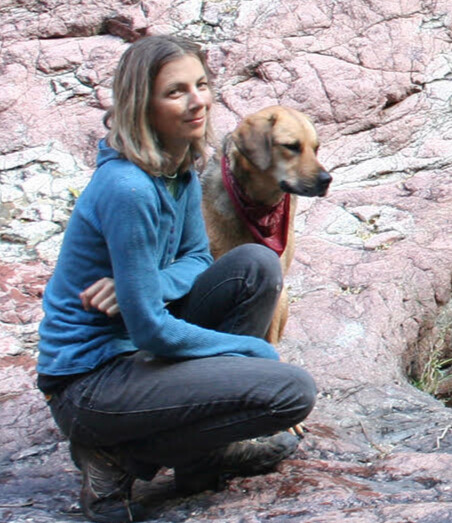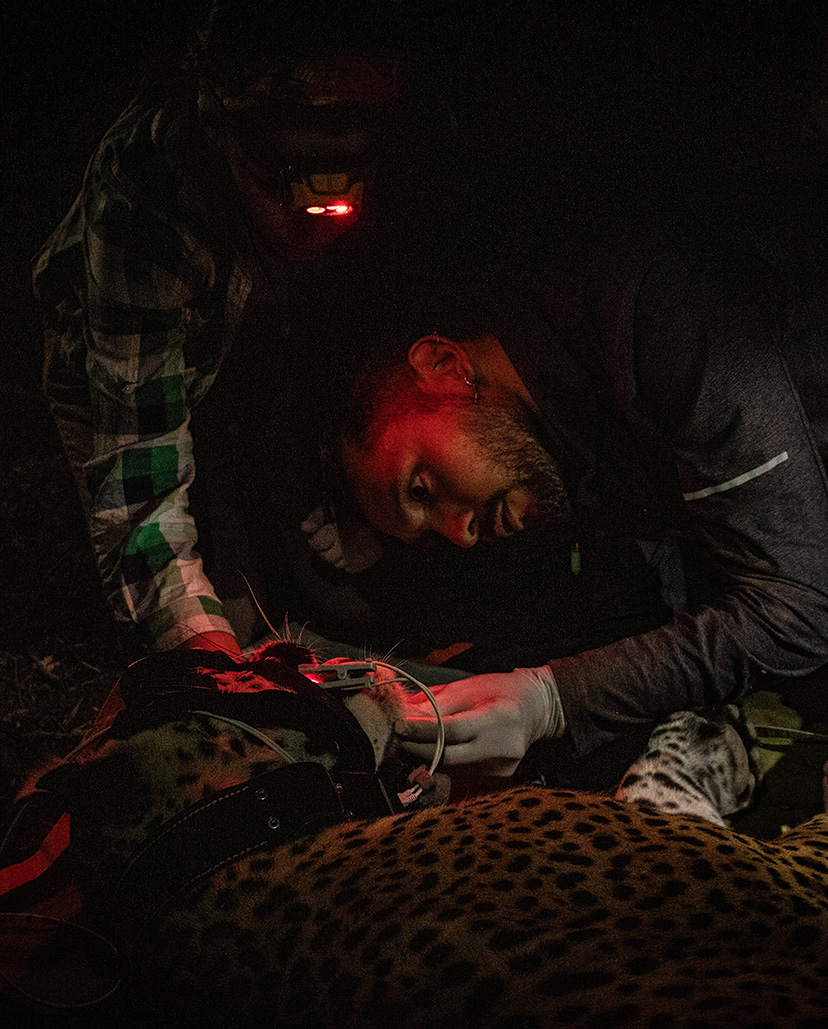Where Rivers Roar and Jaguars Roam: A Wild Return
September 27, 2025
This is a continuation of Creatures of the Starlight: Looking for El Tigre in Sonora … Léelo en español ¡Disponible pronto!
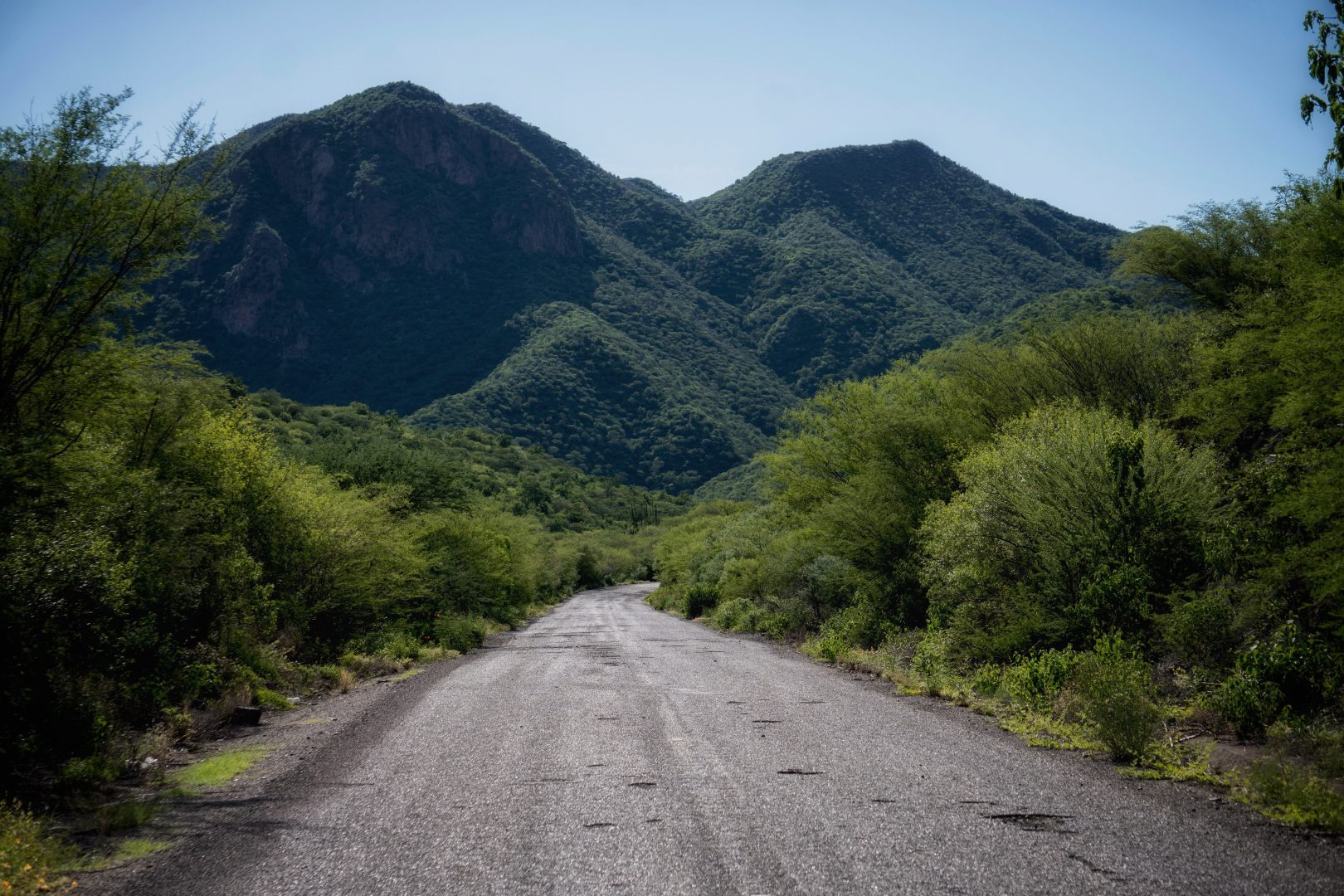
As we drove south through the northern jaguar corridor, the road seemed designed to lead our group of rewilders and river runners from the U.S., Mexico, and Argentina away from the pace of the international border and into the wild ahead. The two-lane highway was narrow, without a shoulder, and densely lined with boat-thorn acacia. Eventually, the first palm tree came into view. The switchbacks became tighter. We were still on the highway, but our speed reduced as we watched for potholes the size of craters. A desert tortoise crossed the road, and before our eyes, the Sky Islands turned into the verdant foothills of the Sierra Madre.
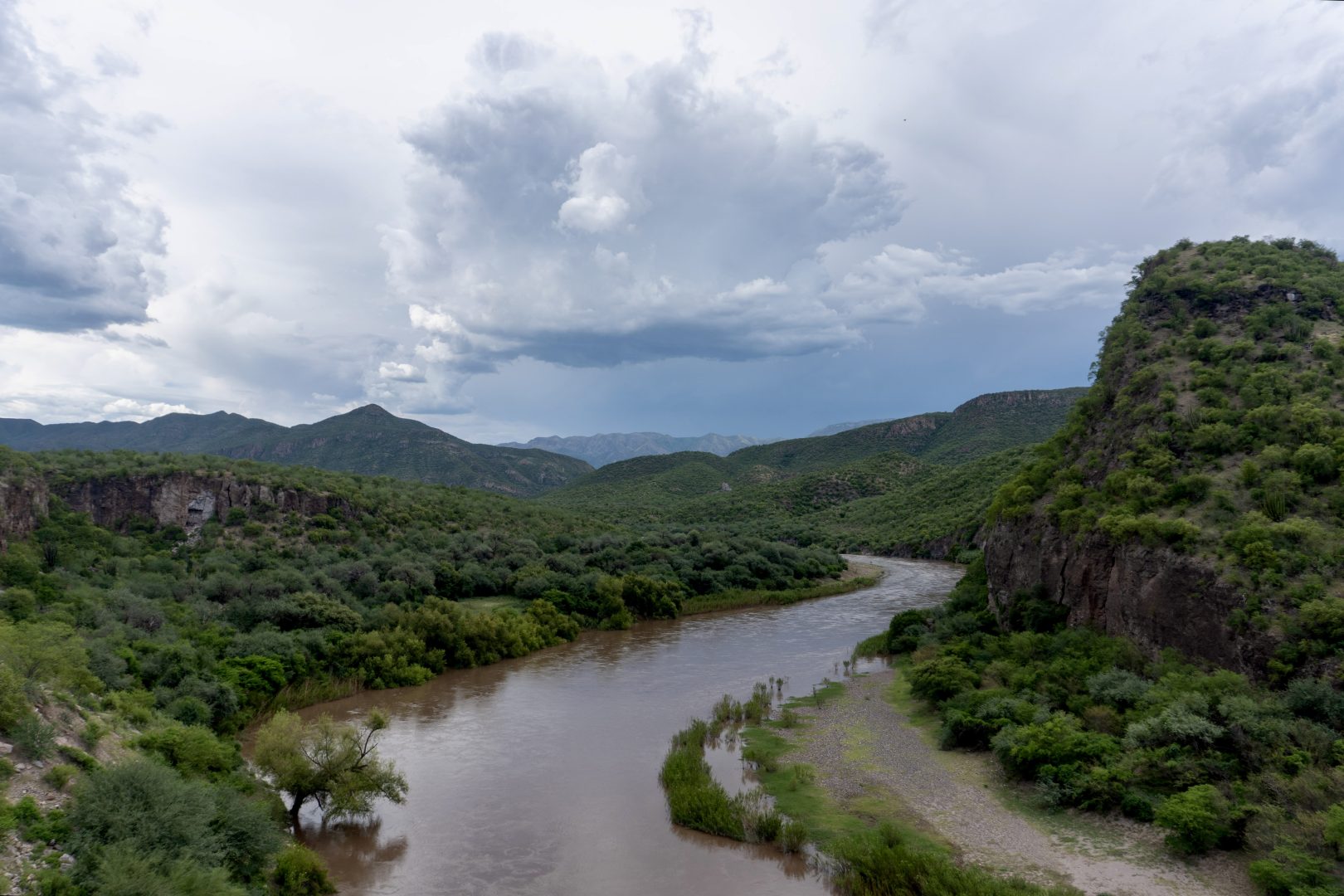
We stopped in the middle of the bridge that towers above the life-giving Río Yaqui. In this location, upstream from dams and diversions, this river is very much alive. The Río Sahuaripa arrives and together they continue toward the sea. During the rainy season, the mountains here transform into a jungle of greenness and rivers flow an opaque, muddy brown. We looked for the aerie where bald eagles are known to reside, while acrobatic swallows darted to their nests on the soffit. One of our friends poured a Tecate over the railing as a libation to honor the river, an offering that sought good fortune in the days to come.
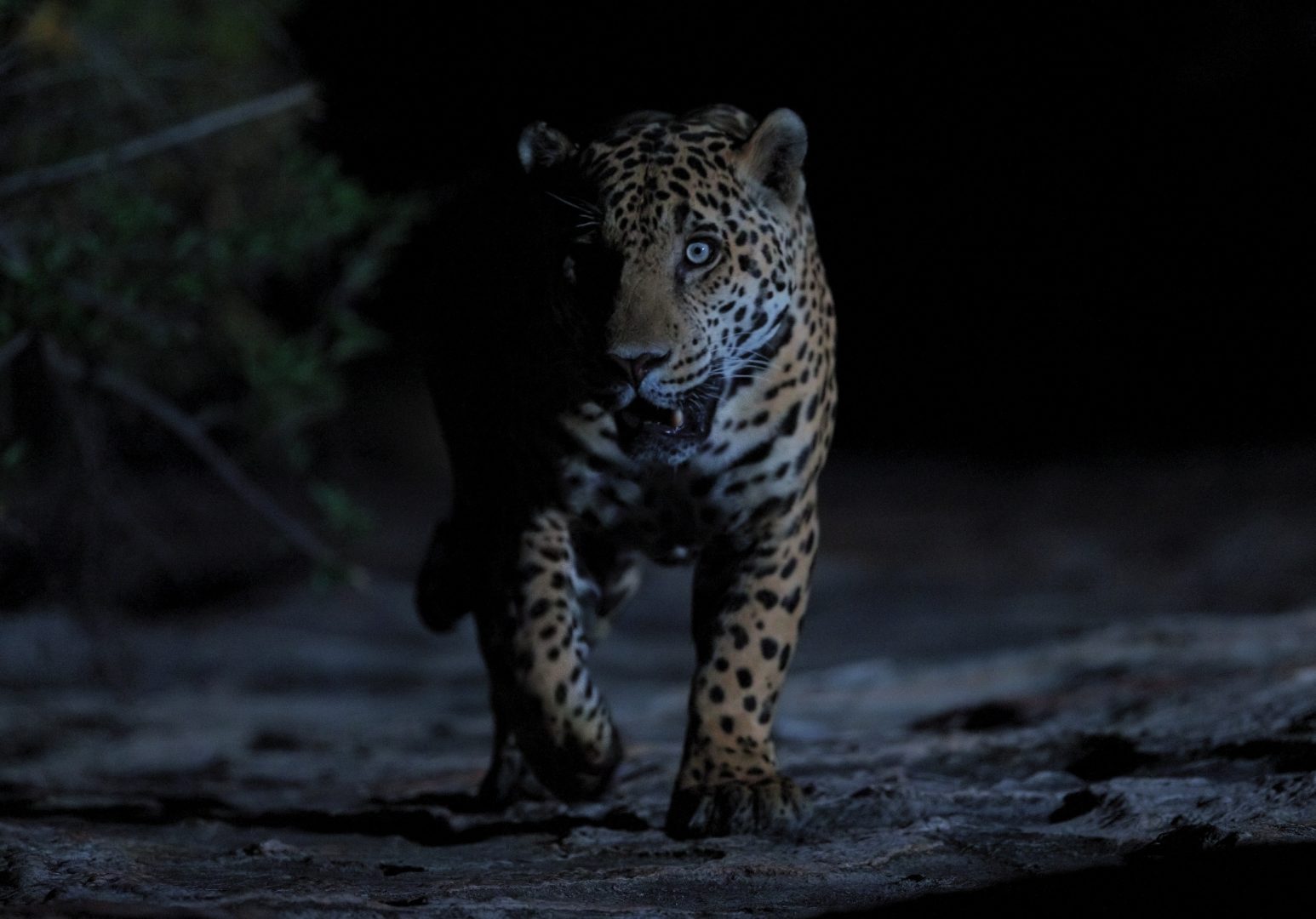
We were in the neighborhood of the Northern Jaguar Reserve, created after independent researchers examined historical accounts, set up motion-triggered film cameras, assessed threats, and realized these ranches were in need of protection. They wrote a book, Borderland Jaguars, where they concluded, “Designating such a large area as a jaguar reserve would not be easy.” They called it an impractical dream. Fortunately, they went on to find people with the skills to achieve the seemingly impossible.
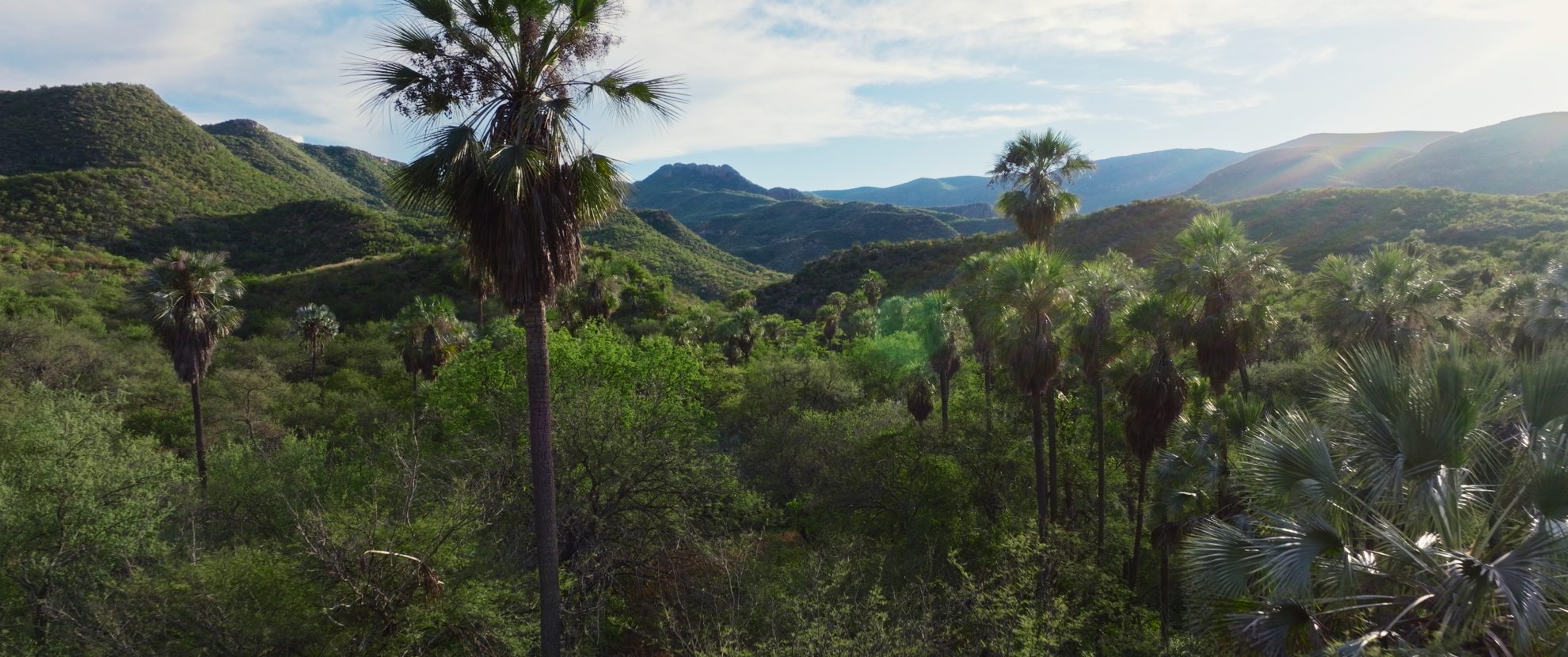
Today, the reserve provides a safe haven for the northernmost breeding population of jaguars. This is a remote, corrugated landscape with deep canyons, sheer cliffs, and jagged mountains around every bend. Little out here is flat; if it were possible to iron out the wrinkles in the terrain, the reserve would grow two-and-a-half times in size. There are few roads, and what roads do exist are an amalgam of rocks and ruts, often negotiated at a crawling pace and considered the best filter to keep people out. Arriving at dusk, a dozen mountain peaks dot the horizon without a single electric light visible, making it easier for animals that need the night to maintain their nocturnal behavior.
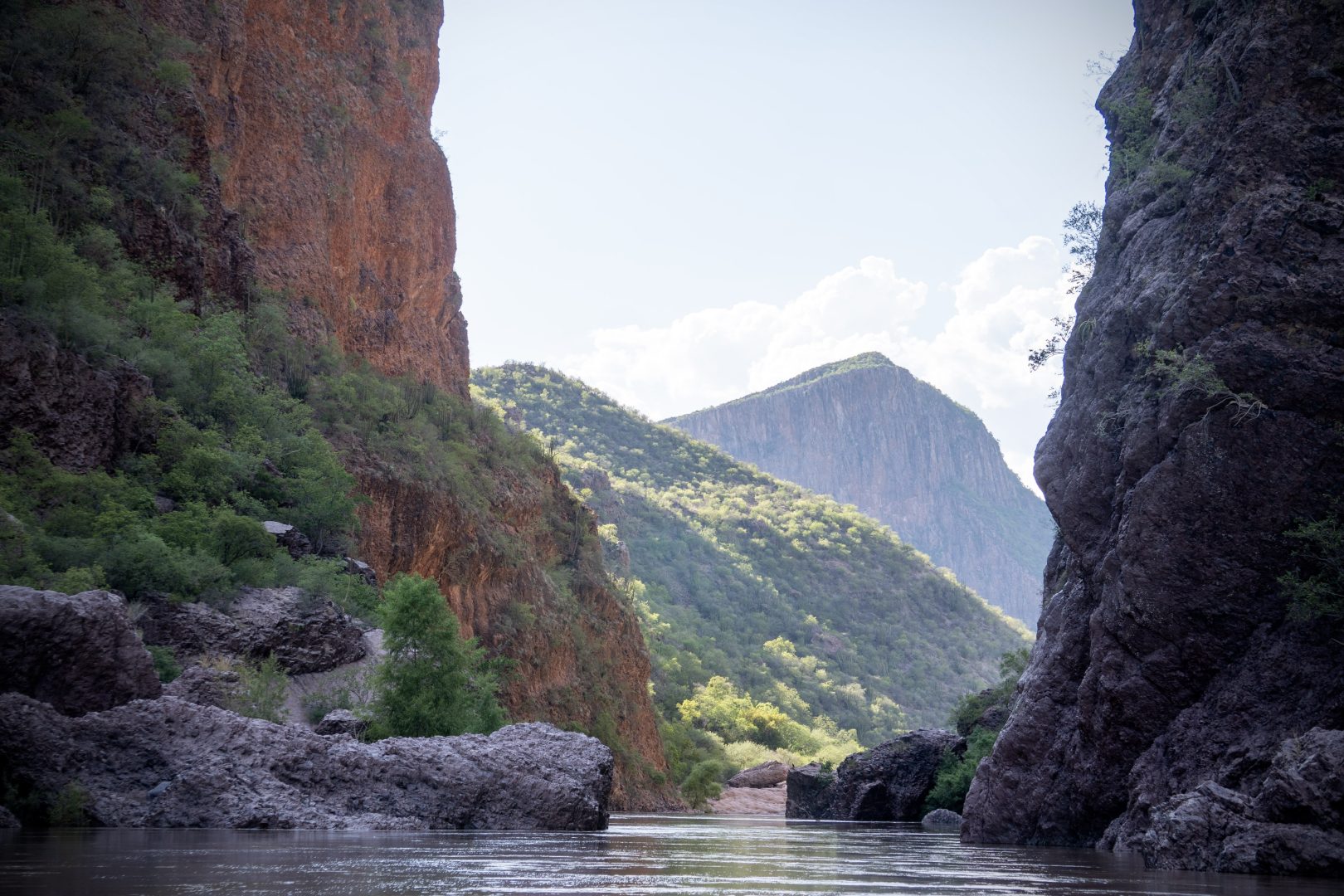
A watery vein defines the eastern boundary of the reserve: The wild, free-flowing Río Aros is the longest undammed river in northern Mexico. As it snakes and meanders through the seasons, it offers constant, cool relief in an otherwise hot, arid land. Gravity pulls the Aros north to meet the southbound Río Bavispe, the confluence soon after the reserve ends. The two rivers join to form the Río Yaqui, which widens and calms after the whitewater above. The entire corridor teems with life, from mergansers bobbing on the water to Neotropical river otters leaving footprints in the mud. In a dream world, we would have been there to see their return.
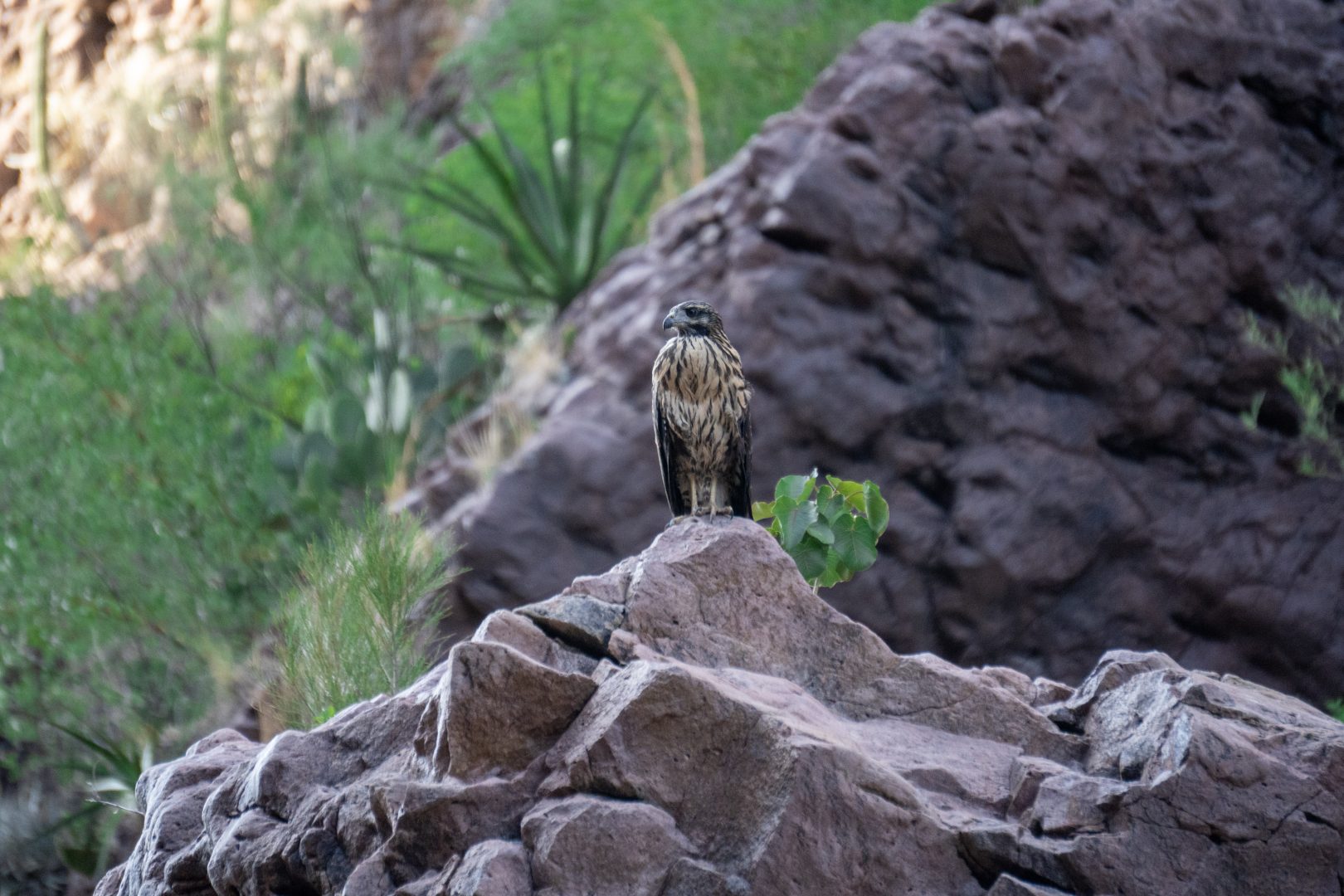
Given the topography, the Aros is only reachable from the interior of the reserve in a handful of places. To know its most secluded corners, we would have to float there over 105 river miles. But this is tricky; river conditions must be perfect with the right amount of rain. The water level cannot be so high it becomes dangerous, nor so low that navigating rapids turns into a boulder-garden mess. We looked at data from past years’ gauges, talked to locals, thought a lot about safety, and assembled a team comfortable with big water and big wilderness. Thankfully the stars did align – because in having paddled the Río Aros, it is now etched on our hearts.
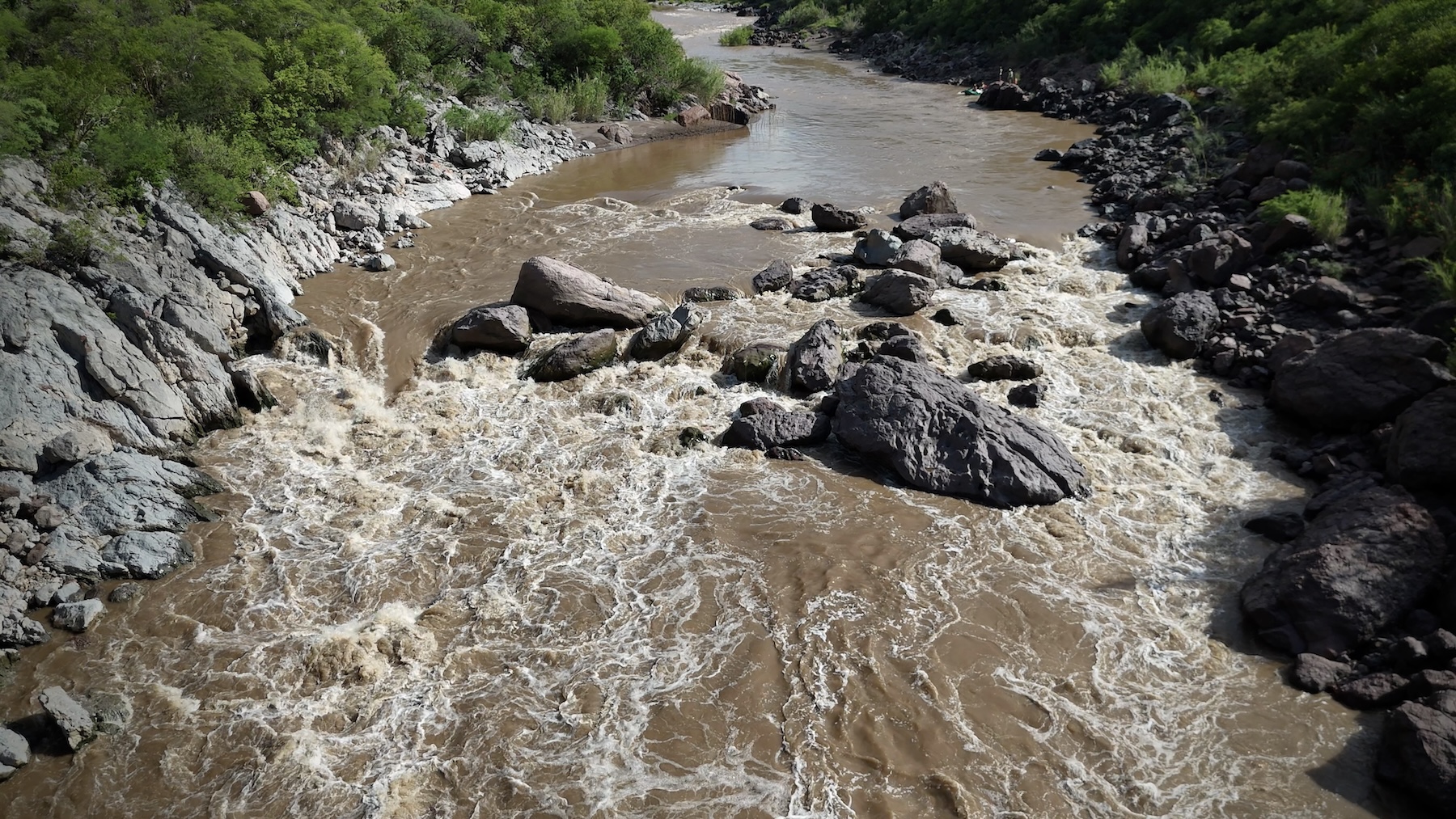
We arrived at the launch point, assembled boats, watched the river swell from a monsoon the night before, and began. The river transported and flowed through us; every wave, rapid, and section of flat water with its own feel. We met its power, jumping in and trying to swim upriver but not moving at all. We picked our lines and rode more wave trains than we can remember. The rumble of the class IV roller coaster La Morita rapid announced itself before we could see it. The scale of the sheer cliff face at Roca Roja rapid was love at first sight. That this place of such extreme beauty is now protected as part of the reserve felt like a deeply meaningful gift.
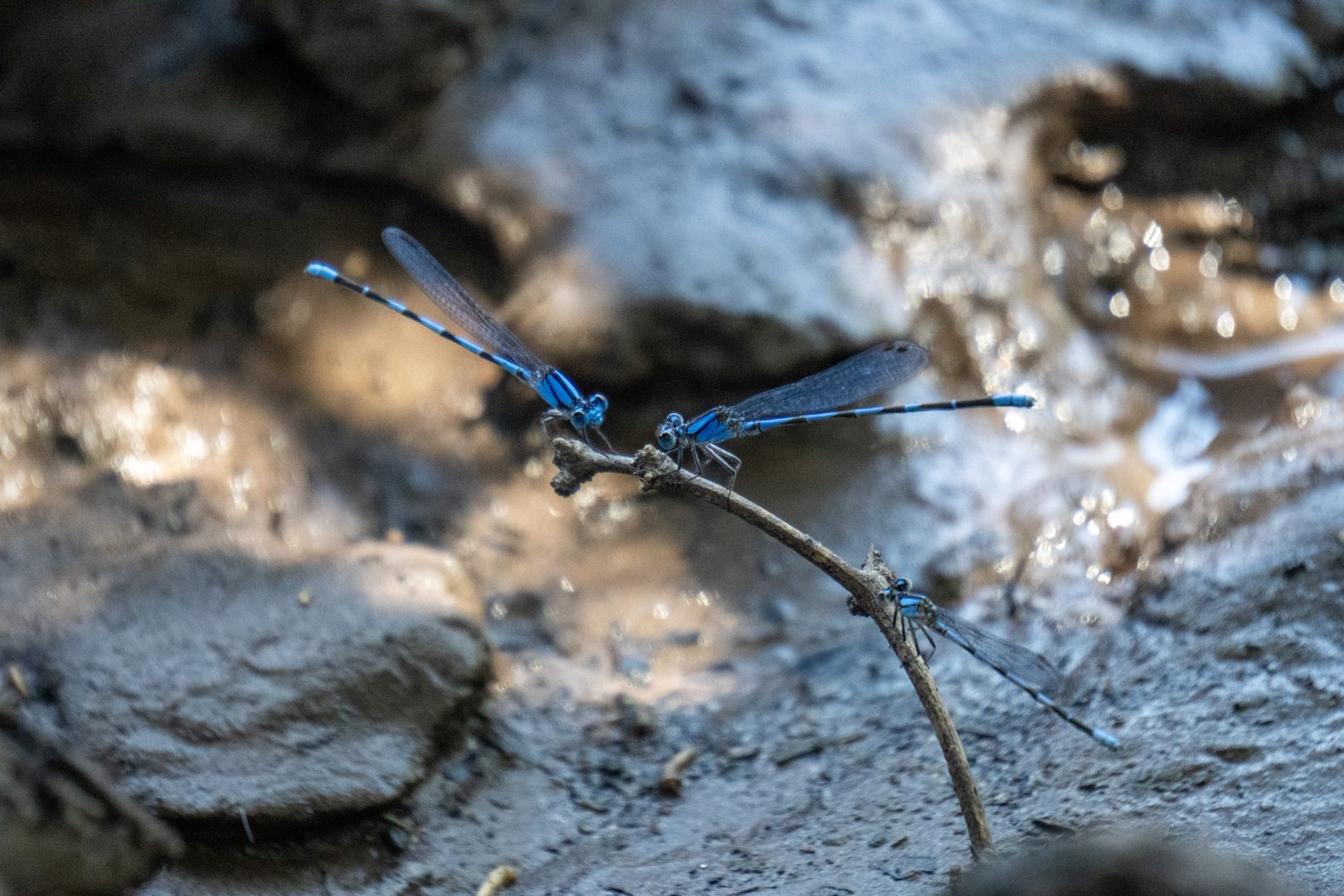
The winged world showed us the song of these rivers, which was reason alone to visit. Ravens called every morning to wake us up, and we had a lifetime supply of common black-hawk sightings. There were favorites like hooded orioles, green kingfishers, and broad-billed hummingbirds, and we accidentally startled a great horned owl. We walked up a slot where a canyon wren’s cascading notes echoed, and curious high-pitched bat squeaks came from a crevice in the rock. Black phoebes hovered at water’s edge, and blackened bluewings landed near our tents. We saw hundreds, if not thousands, of blue damselflies, plus a small number of American rubyspots. Odonata are believed to herald rain, in this case backed up by billowing clouds and brilliant lightning displays.
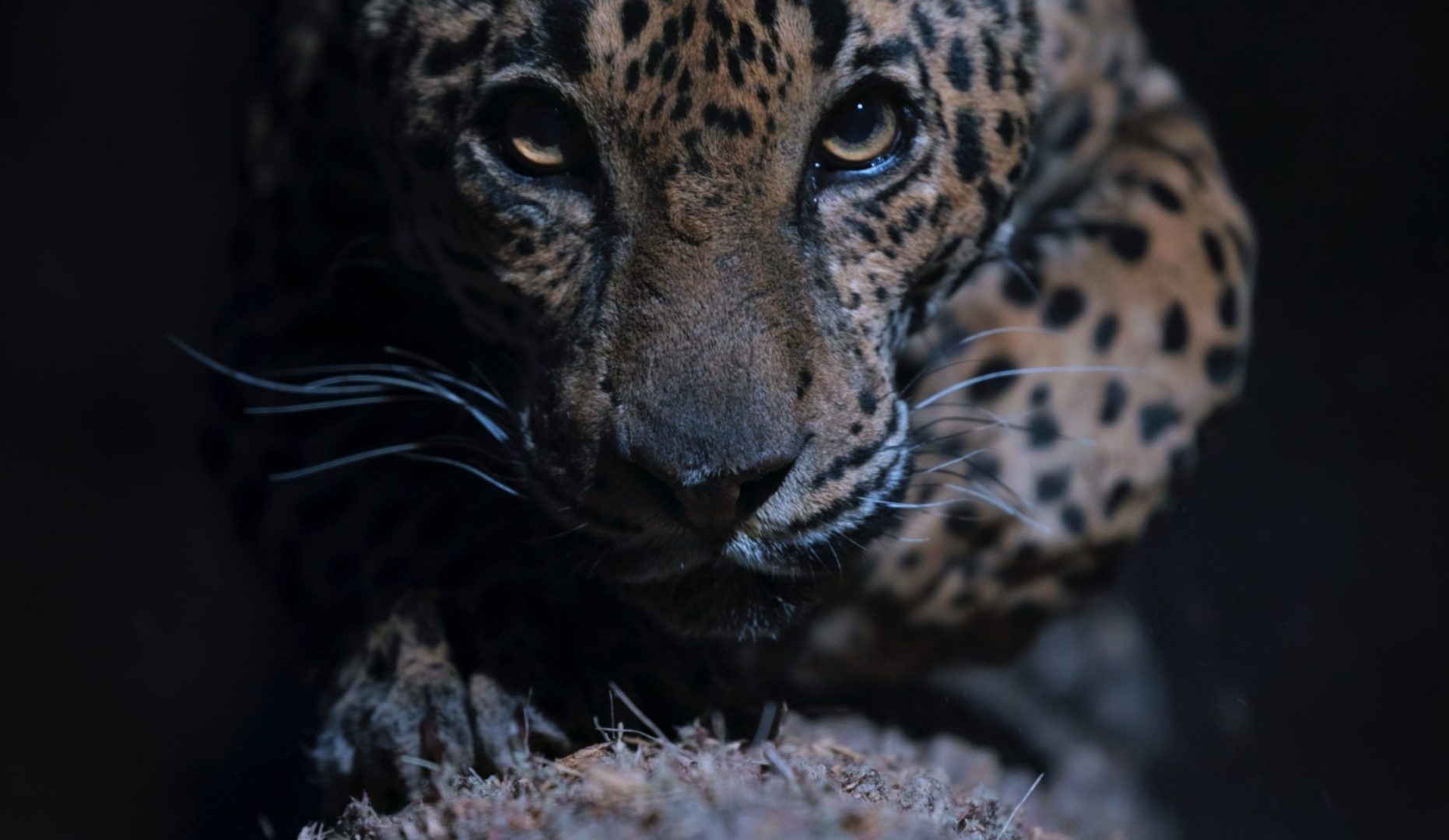
In two decades, more than 80 different jaguars – each with their own story – have been recorded on the reserve and nearby, conservation-friendly ranches. Some of these individuals are just passing through; others call this place home over many years. Highlights gleaned from a vast network of field cameras include rare and intimate moments: photos of mother jaguars with cubs, twice-in-a-million videos of mating pairs, and footage of fallen trees acting as scratching posts. Despite these snapshots into their lives, in-person observations are extremely uncommon. We held on to hope that a jaguar might swim by.
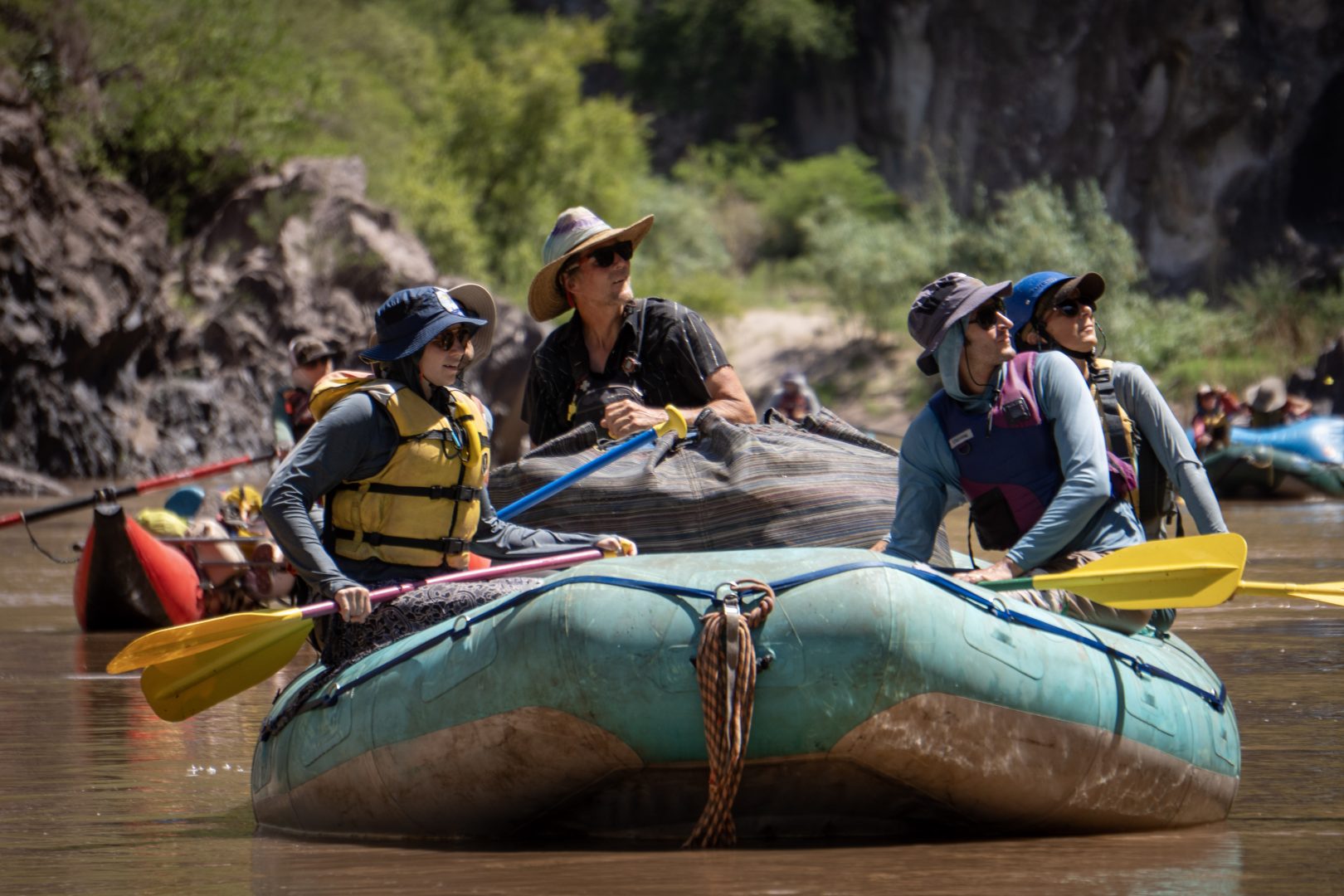
Our second night on the river, we found a trail of fresh, well-defined cat tracks near camp. Big and round, we wanted to say jaguar but knew they belonged to a mountain lion. The next day, in a moment of grace, a puma was in an alcove at the waterline and met eyes with the last boat in our flotilla. This precipitated an extended, clear view of the cat bounding up the hill away from us, jumping, stopping, and moving some more, tail prominent. We were consumed with sudden delight and amazement. Everyone was dead silent, unable to move a muscle – mouths dropped open, eyes welled up, hearts paused. When the mountain lion was gone, an explosion of rapture.
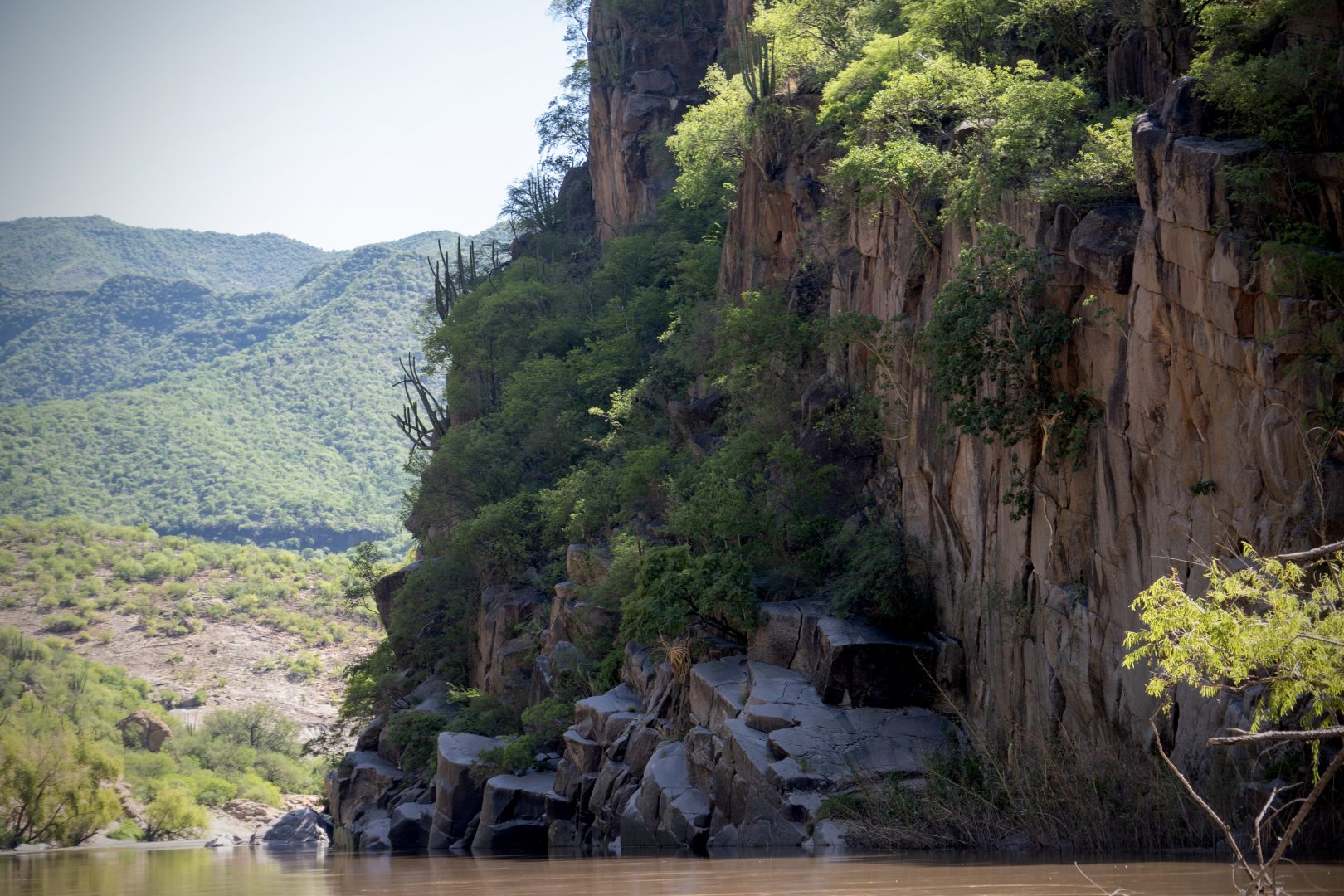
Truthfully, we felt as much excitement seeing how wild fig trees grow out of rocks with roots exposed. The elephant trees with their peeling trunks, sycamores hanging out with kapoks, and the skyward limbs of pitaya all held our attention, as did the light that hit the flowering acacias at dawn. For shade at mid-day, we tied our boats under the canopy of old-growth willows. We visited an arroyo with water-sculpted rock walls where a mud turtle tolerated the afternoon heat. Around dusk, while looking for tracks, we almost stepped on a perfectly camouflaged coachwhip in the sand.
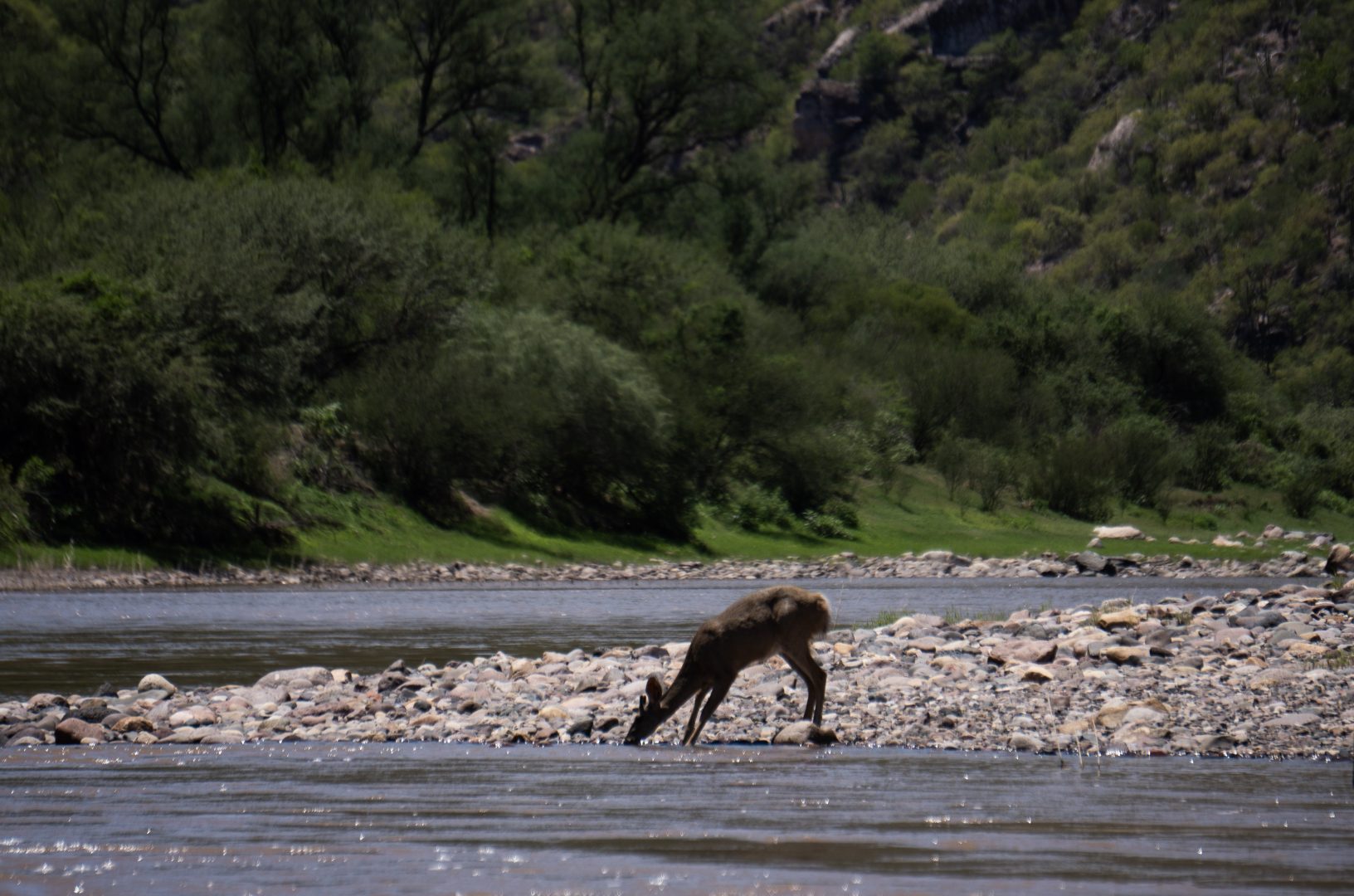
A trip down the Aros and Yaqui is rare. We know we were the only group of river runners this year, likely in several years. To be on the water with certainty that no other rafters were ahead of us, nor coming behind, enhanced the wildness. Whenever deer came to drink, it was easy to imagine we were the first humans they had seen. We only encountered three people, a couple of dogs, a few horses, and heard two airplanes along the entire route. Yes, there were cows, but on a planet with eight billion people, this would still count as the wild unknown.
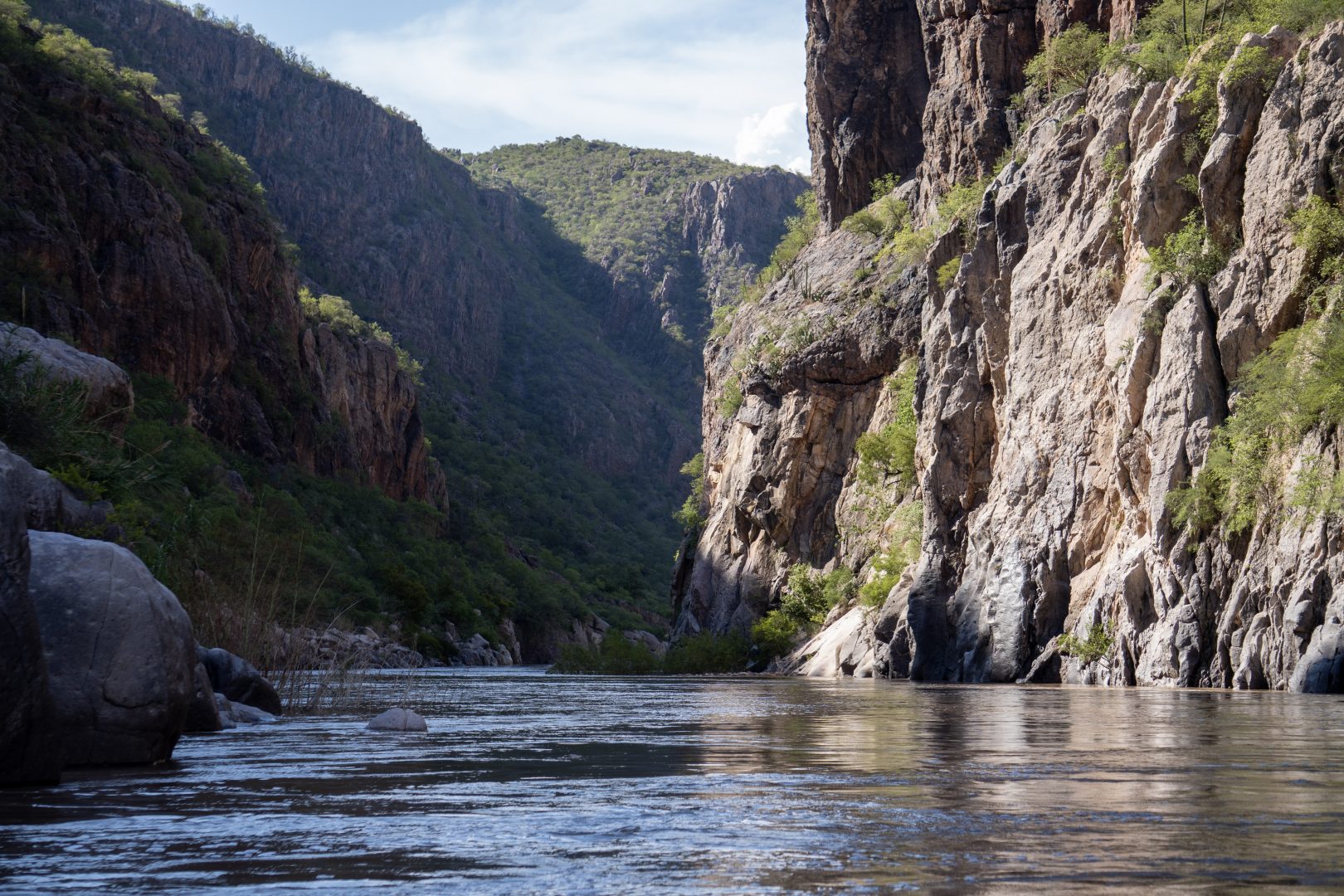
We like the idea that a river holds deep and subtle wisdom. That running water carries hope with it and a tonic to heal our relationships with nature. That water in the desert provides an opportunity to recharge, for senses to awaken, and to feel invigorated. We soaked up the pulse of these rivers. We ventured into a place where it was possible to feel the strength and resilience of life, the solitude and integrity of wilderness, and the need to protect all of it.
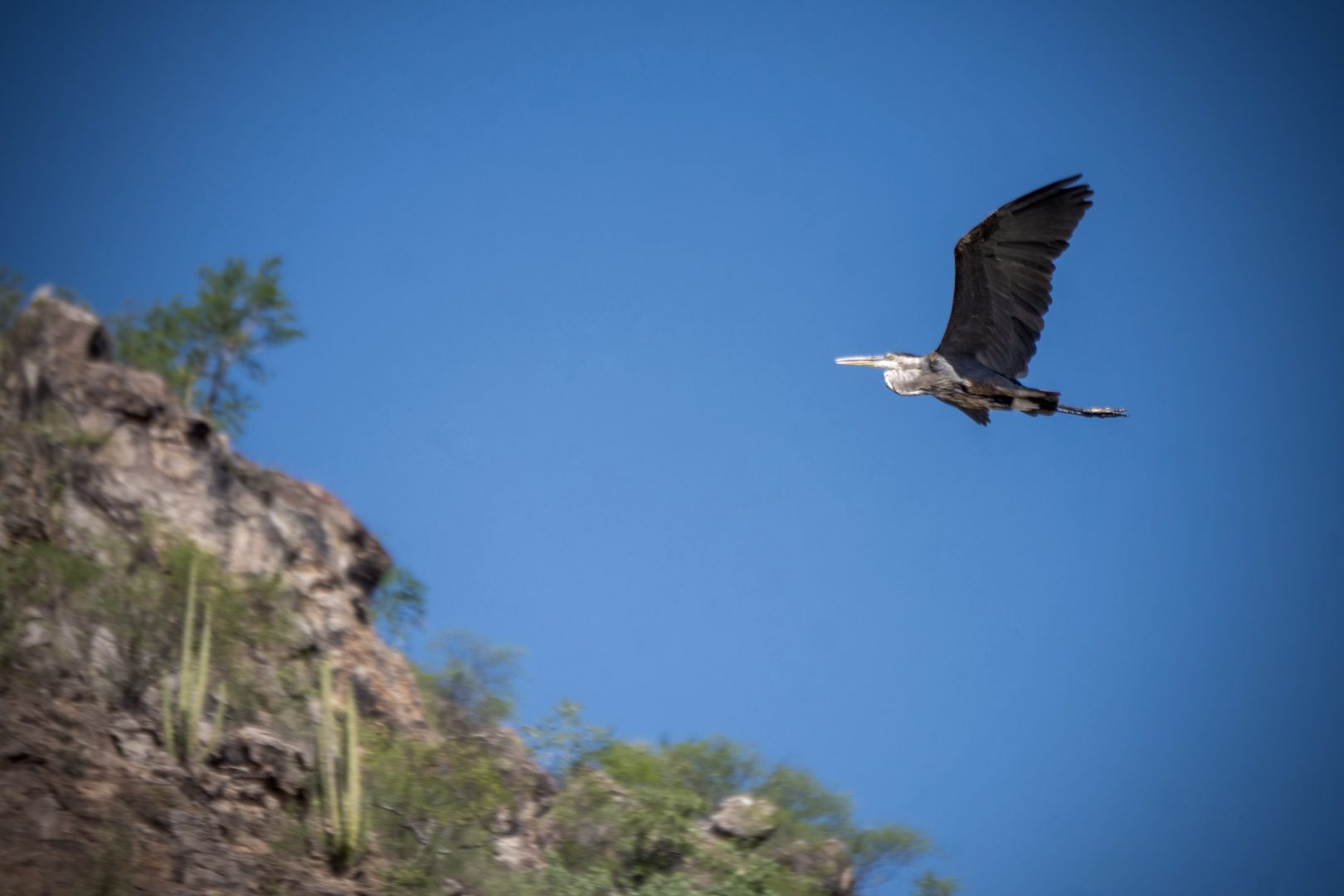
Pairs of great blue herons ushered us down the river. If one flew off, another would arrive to fill in and take their place. They were our guides and companions every single day. For their final bow, a siege of a dozen herons came together – a single egret joined them – to escort us over several enchanting miles. It was as if all the individuals and pairs who had accompanied us in the preceding days were now assembled to pull us to the finish. They led us to one last cat track in the mud, this one pointing north and belonging to a young jaguar. A new, wild journey is ahead, more jaguars are coming.
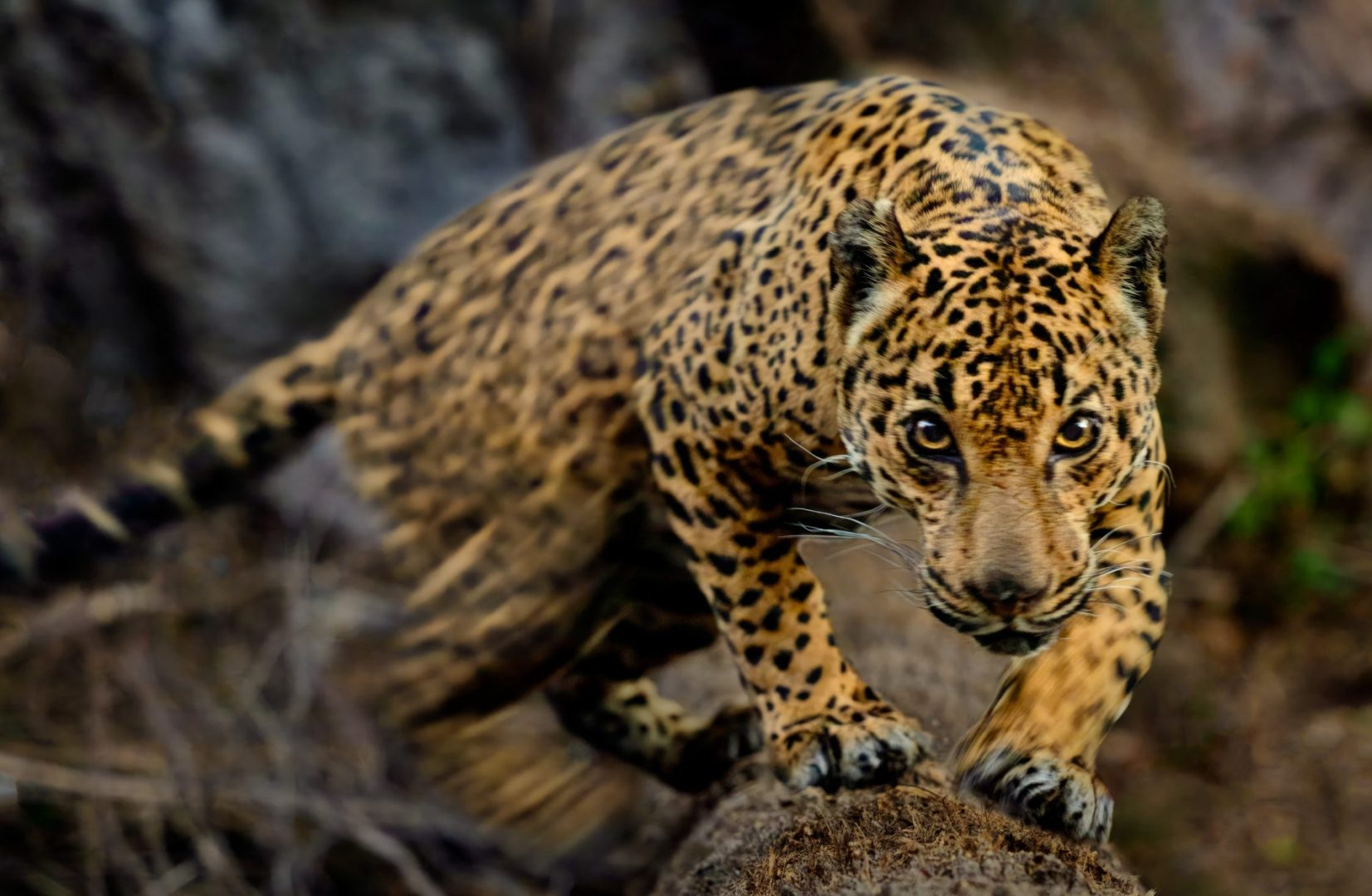
What Now: The Northern Jaguar Reserve must be supported so this beloved core area and the surrounding Viviendo con Felinos buffer zone continue to effectively safeguard big cats. La Tierra del Jaguar has a passion for building bridges with communities that is contagious. With them, a regenerative economy is on the horizon. Cuenca Los Ojos is expanding its footprint, restoring land and water, to grow what is possible for jaguars near the U.S.-Mexico border. Connecting all of these is the El Tigre corridor, where Profauna Sonora and the Rewilding Institute are working to reduce conflicts where jaguars roam. And finally, Rewilding Argentina, including the Jaguar Rivers Initiative, shows us how to bring jaguars fully back to the borderlands.
Thanks to Avery, who loved this river and whose spirit will forever be a lifeguard of its waters. Thanks to the river runners – Jackson, Dan, Neil, Lacey, Monique, Dave – who invoked confidence in the neophytes and deftly captained this expedition. And to Randy and Allison, nothing here would have been possible without you and the fantastic team you work with. Photos of the jaguars El Guapo and Libélula on the Northern Jaguar Reserve, and of the palm oasis, courtesy The American Southwest / Fin and Fur Films. To learn more: La Tierra del Jaguar, Northern Jaguar Project, Cuenca Los Ojos, Rewilding Institute / Profauna Sonora, Rewilding Argentina.

